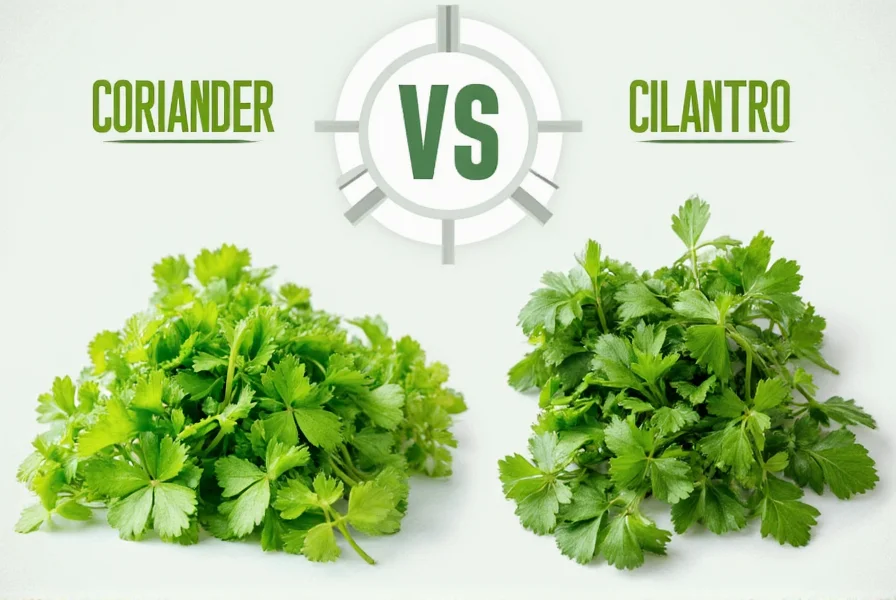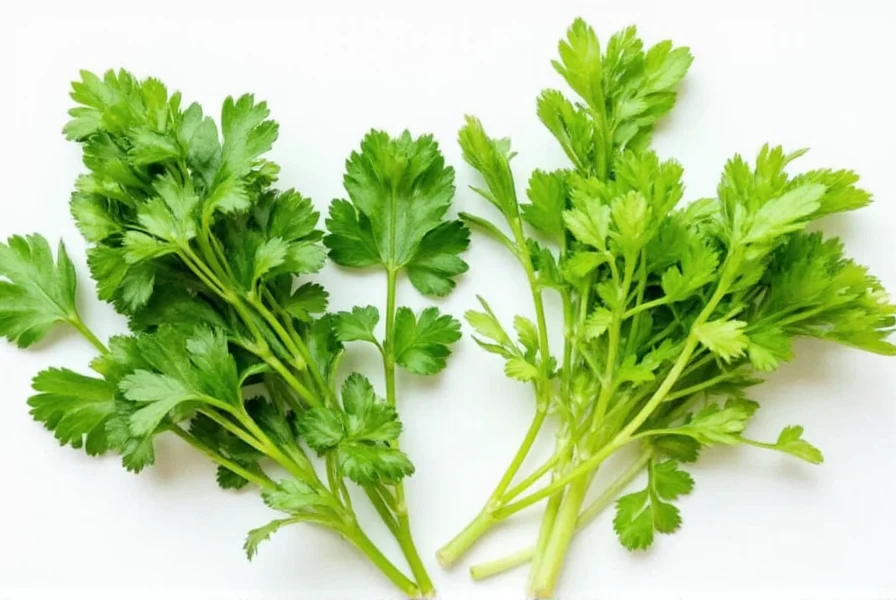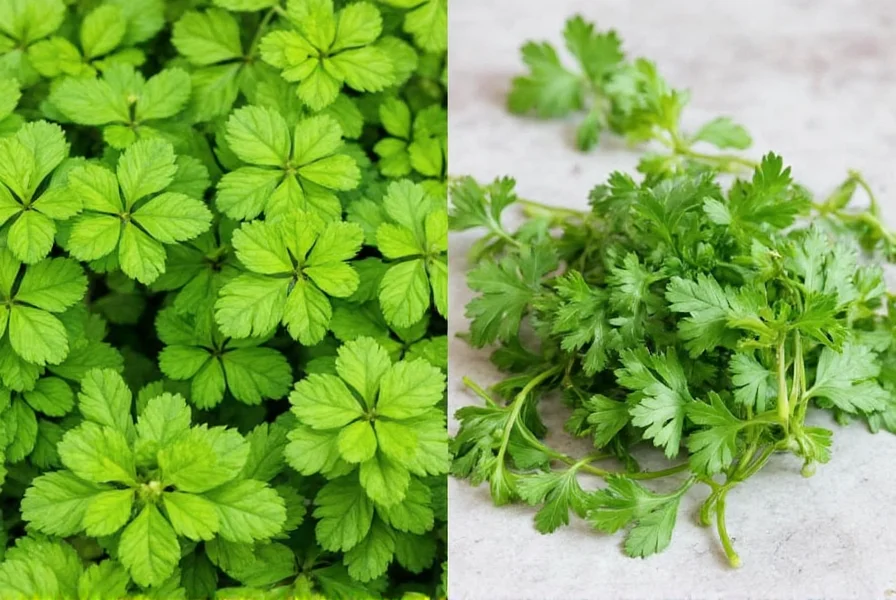Yes, coriander and cilantro come from the same plant—Coriandrum sativum. The difference lies in regional terminology: "cilantro" refers to the fresh leaves and stems in the Americas, while "coriander" typically describes the dried seeds globally. In the UK, Australia, and much of Europe, the entire plant is called coriander, with the leaves sometimes labeled "fresh coriander."
Understanding the distinction between coriander and cilantro resolves confusion for home cooks and professional chefs alike. This common culinary misunderstanding stems from linguistic traditions rather than botanical differences. Let's explore why the same plant has two names and how this affects cooking worldwide.
Why the Same Plant Has Two Different Names
The term "cilantro" derives from the Spanish word for the fresh leaves of Coriandrum sativum, while "coriander" comes from the French adaptation of the Greek word koriannon. This linguistic divergence explains the regional naming preferences that continue today.
| Region | Leaves/Stems Term | Seeds Term |
|---|---|---|
| United States & Canada | Cilantro | Coriander |
| United Kingdom & Australia | Coriander (or Fresh Coriander) | Coriander Seeds |
| Mexico & Latin America | Cilantro | Coriandro |
| India & Southeast Asia | Coriander Leaves | Dhaniya |
Botanical Facts About Coriandrum sativum
The coriander plant grows to about two feet tall with lacy, bright green leaves. When allowed to mature, it produces small white or pink flowers that develop into round seeds. Both the fresh leaves and mature seeds offer distinct flavor profiles that culinary professionals leverage differently.

Flavor Profiles: Leaves vs. Seeds
Cilantro (the leaves) delivers a bright, citrusy flavor with subtle peppery notes that many describe as refreshing. However, genetic factors cause about 21% of people to perceive a soapy taste due to aldehyde sensitivity.
Coriander seeds, by contrast, offer warm, nutty, and slightly citrus notes with floral undertones. When toasted, they develop deeper, more complex flavors that work well in spice blends. This fundamental flavor difference explains why you cannot substitute one for the other in most recipes.
Can You Substitute Coriander for Cilantro?
Understanding the difference between coriander and cilantro prevents recipe disasters. While both come from the same plant, their flavor profiles differ significantly:
- Using coriander seeds in place of fresh cilantro creates an entirely different dish
- Fresh cilantro cannot replace ground coriander in spice mixes
- Cilantro stems contain more flavor than leaves and work well when finely chopped
- Coriander seeds benefit from toasting before grinding to release essential oils
For those seeking a cilantro substitute, fresh parsley with a squeeze of lime comes closest to mimicking its bright flavor. When replacing coriander seeds, a blend of cumin and caraway offers a similar earthy profile.
Global Culinary Applications
The regional terminology differences reflect how various cuisines utilize this versatile plant. Mexican and Thai cuisines prominently feature fresh cilantro in salsas, guacamole, and curries. Indian and Middle Eastern cooking relies heavily on coriander seeds in spice blends like garam masala and za'atar.

Chefs worldwide understand that recognizing why cilantro is called coriander in some countries prevents ingredient confusion. This knowledge proves especially valuable when following international recipes that use regional terminology.
Storage Tips for Maximum Freshness
Proper storage extends the usability of both plant components:
- Store fresh cilantro stems in a glass of water (like flowers) covered with a plastic bag in the refrigerator
- Freeze cilantro leaves in ice cube trays with water or oil for longer storage
- Keep coriander seeds in an airtight container away from light and heat
- Grind seeds only when needed, as pre-ground coriander loses flavor quickly
Common Questions About Coriander and Cilantro
Is coriander the same as Chinese parsley?
Yes, Chinese parsley is another name for cilantro or coriander leaves. The plant goes by many regional names including dhania in India, culantro in some Latin American countries (though this differs from true culantro/Eryngium foetidum), and fresh coriander in British English.
Why do some people hate cilantro?
Approximately 21% of people possess a genetic variation that makes cilantro taste soapy to them. This genetic trait affects how aldehydes in cilantro are perceived. Those with this sensitivity often substitute fresh parsley with lime juice to achieve a similar visual presentation without the unpleasant flavor.
Can you grow cilantro from coriander seeds?
Yes, you can grow cilantro from coriander seeds since they come from the same plant. Simply plant dried coriander seeds about 1/4 inch deep in well-draining soil. The seeds typically germinate within 7-10 days, producing cilantro leaves in about 3-4 weeks. For continuous harvest, plant new seeds every 2-3 weeks as cilantro bolts quickly in warm weather.
What's the difference between culantro and cilantro?
Despite similar names, culantro (Eryngium foetidum) and cilantro (Coriandrum sativum) are different plants. Culantro has long, serrated leaves and a stronger flavor than cilantro. It's commonly used in Caribbean, Central American, and Puerto Rican cooking. While you can substitute culantro for cilantro in some recipes, use half the amount due to its more intense flavor.
Does coriander have health benefits?
Both cilantro leaves and coriander seeds offer nutritional benefits. Cilantro provides vitamins A, C, and K, while coriander seeds contain dietary fiber, manganese, and iron. Research suggests coriander may help lower blood sugar, reduce inflammation, and support heart health. The leaves also contain antioxidants that may protect against oxidative stress.











 浙公网安备
33010002000092号
浙公网安备
33010002000092号 浙B2-20120091-4
浙B2-20120091-4